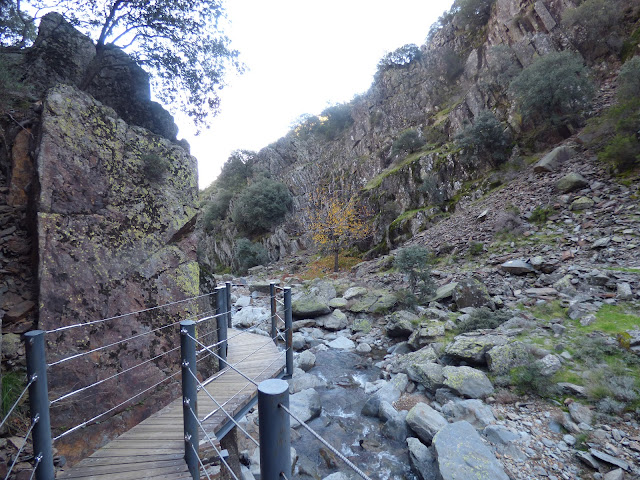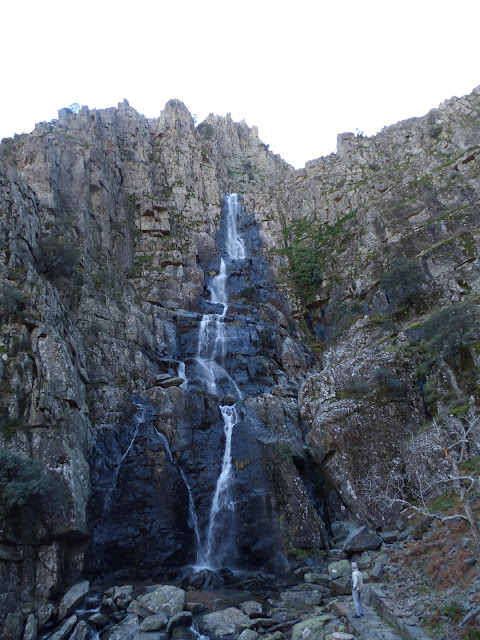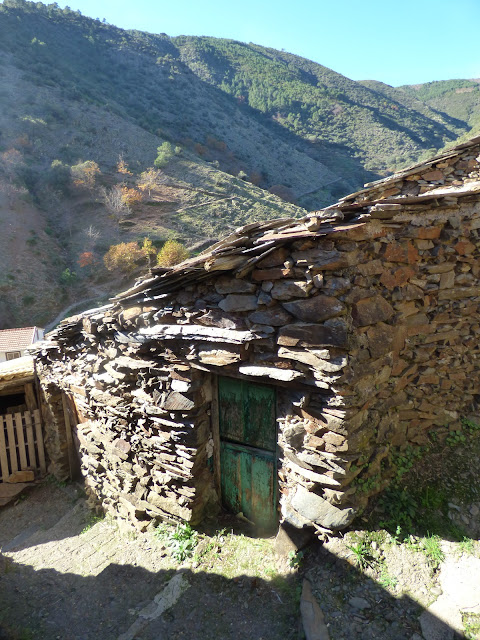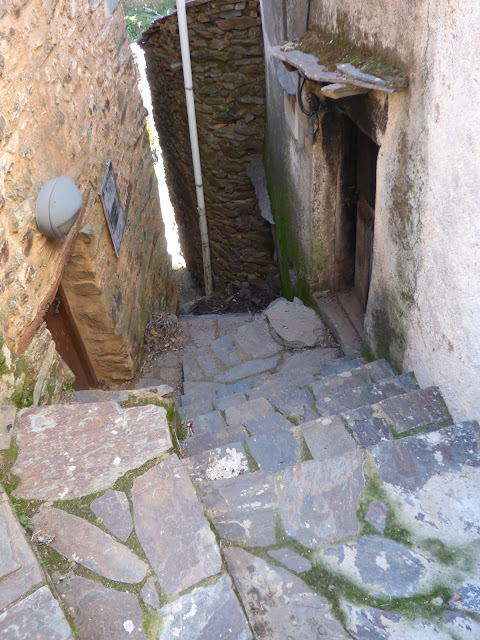We left the finca early as it's a 2 1/2 hour journey to the tiny pueblo of El Gasto, literally the end of the road, a very winding and steep road.
Our aim was to do the hike between El Gasto and the powerful waterfall known as Chorro de la Meancera.
The views down the valley and up to the amazing crags were exciting before getting to the main attraction, the waterfall itself. The water seems to irrupt from a narrow crack in the crag and falls with mighty force for over 100 metres crashing into a pool before tumbling down the river over smooth rocks and ledges.
.
The day was sunny and warm, a wonderful place to linger and breathe in the surrounding nature but I would love to come back on a gloomy day with rain and possibly some thunder and lightening for a really gothic romance experience.
We walked back on the same route with fresh perspectives.
In the past it was recorded that not only were the people here were so restricted that they could not make bread but also they built with no chimneys, letting the smoke from cooking fires escape where it could through the rafters and roof of slate slabs. I saw that none of the old houses had chimneys or even windows, just one primitive wooden door. A vision from the past appeared, a woman sitting at her door with smoke billowing through her roof, she might have been 80 and probably remembers the time before roads, electricity and piped water when the only food was foraged in the woods or from tiny patches of cultivation by the river which were regularly ruined and flooded every winter, when the village was just this collection of old houses with no modern conveniences at all.
She sat there quietly with memories of a life lived through amazing changes, it was as recent as her parents generation that the bizarre and mysterious life of the people here inspired real horror stories of disease, incest, mental and physical afflictions and incredible superstitions..... See this post
https://finca-al-manzil.blogspot.com/search?q=las+hurdes
P.S. Found the honey, bought 500 g of the most wonderful tasting honey for €7.00, no label but straight from the bee keeper.




















































